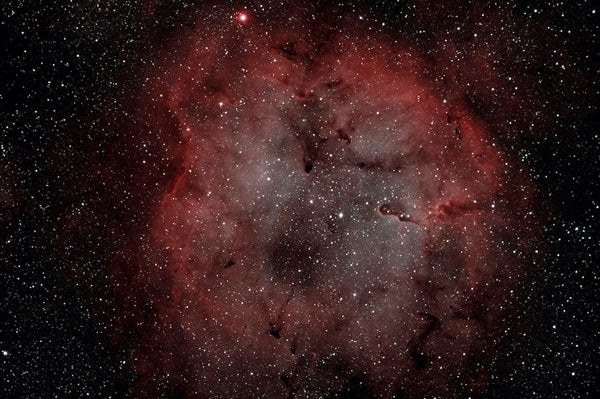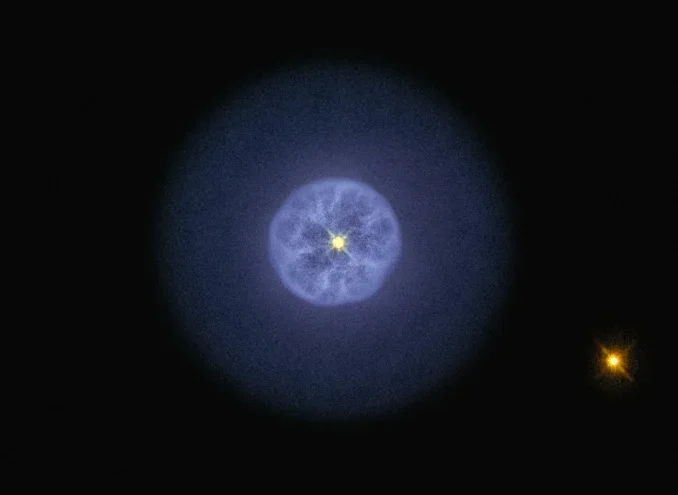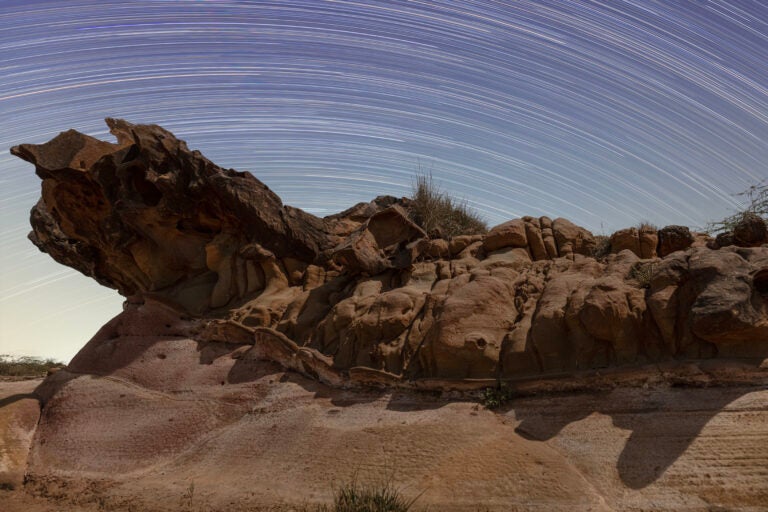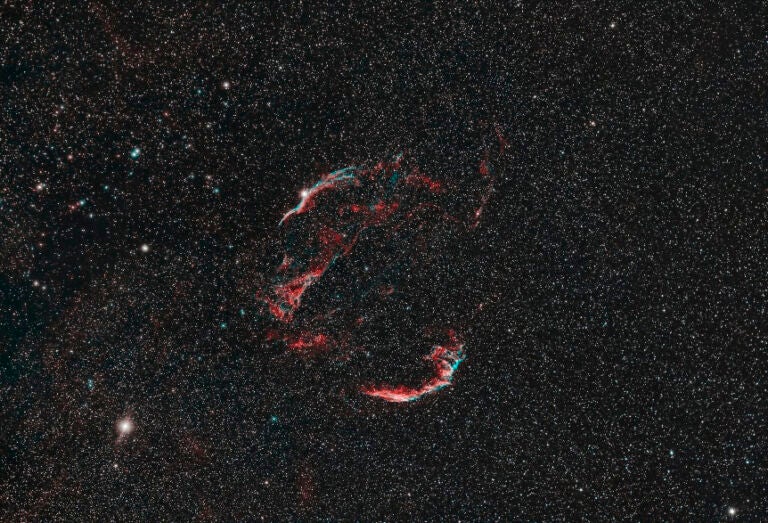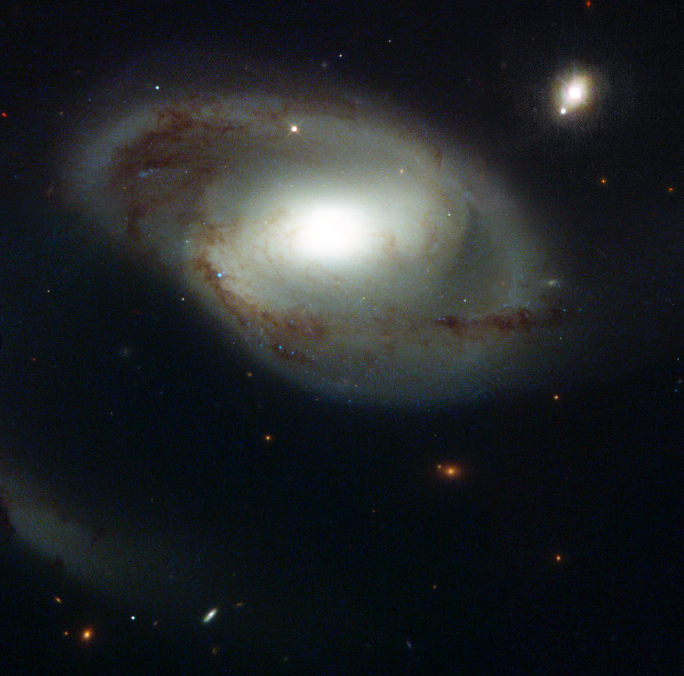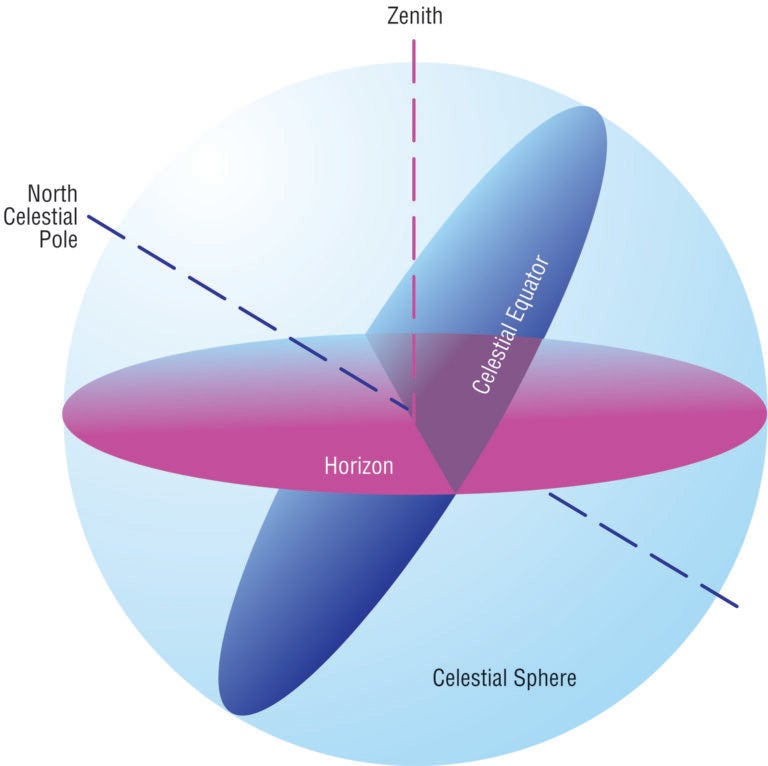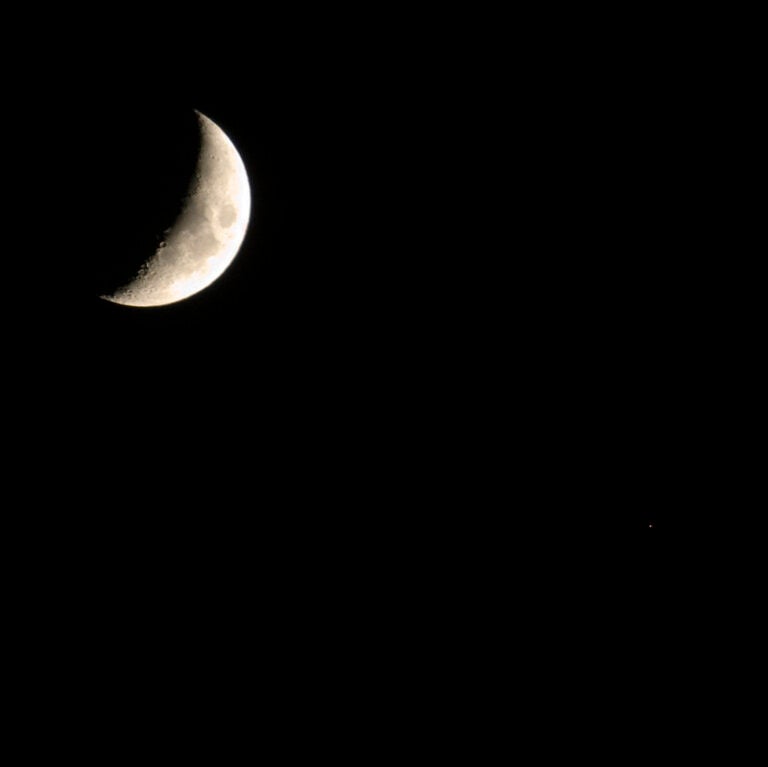Cepheus is a rich region of the Milky Way with many emission nebulae. One of the largest, IC 1396, could be called the Northern Rosette because it resembles the more famous nebula in Monoceros. IC 1396 is about 3° wide, with a hollow interior showing minimal nebulosity. This fascinating object sits some 2,400 to 3,000 light-years away.
The nebula is illuminated by hot stars in its gas-poor interior, where the radiation has physically pushed the gas away. This star cluster is less conspicuous than NGC 2244 in the true Rosette Nebula. The brightest parts of IC 1396 are its northwest and eastern edges. Photographs show a complex of dark nebulae threaded throughout the perimeter. Many of the dust structures are aligned so they appear to radiate away from the stars in the nebula’s core. Those that don’t are likely on our side of the roughly spherical nebular shell. Six of the dark nebulae were discovered by Edward Emerson Barnard: In order of decreasing size, they are B160, B161, B365, B163, B162, and B367.
IC 1396’s most famous feature is IC 1396A, better known as the Elephant Trunk Nebula. The trunk of this dark nebula is formed by an irregular pillar of dust many light-years long. Some observers find it easier to spot than the Horsehead Nebula — another (arguably more famous) dark nebula — because the Elephant Trunk is larger.
On IC 1396’s northern edge is Herschel’s Garnet Star (Mu [μ] Cephei). This supergiant star is similar to Mira and is the archetype of a class of semi-irregular variables called Mu Cepheids (not to be confused with Cepheids, named after Delta [δ] Cephei). Mu varies between magnitude 3.4 and 5.1 over the course of two to two and a half years. This spectral type M2 star is a colorful contrast to the gray nebula.
Some observers report the nebula is visible as a magnitude 5.6 gray patch with naked-eye averted vision. Others instead give its surface brightness, or brightness per unit of area, as about 14 magnitudes per square arcminute. If you observe under exceptionally dark skies, add it to your list of targets. You can decide how bright it appears.
Make sure to explore Astronomy’s full list of 101 cosmic objects you must see. New entries will be added each week throughout 2022.
To get the latest astronomical news and observing content delivered directly to your door, subscribe to Astronomy magazine today!

